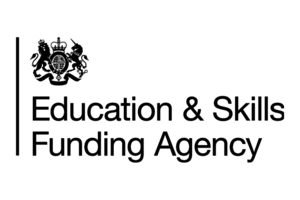There is a long-term downward trend in the tax gap, falling from 7.5% in the tax year 2005 to 2006, to 4.7% in the tax year 2018 to 2019, its lowest recorded rate.
More than 95% of the tax due was paid in the 2018 to 2019 tax year. This is the result of sustained efforts by HMRC to support the overall health of the tax administration system and make it as easy as possible for taxpayers to pay the right tax at the right time.
The tax gap is the difference between tax that should be paid and what is actually paid. HMRC collected £628 billion in tax revenue in 2018 to 2019.
This is the first year that a stand-alone tax gap for wealthy taxpayers has been included in the report. The total wealthy tax gap stands at £1.7 billion and represents a very high collection rate of all tax due within this group. The wealthy tax gap is the smallest proportion of the total gap by customer group, making up 6% of the total tax gap.
Any impact of COVID-19 on the tax gap is likely to be first seen in the tax year 2020 to 2021.
Jesse Norman, Financial Secretary to the Treasury said:
At 4.7%, the 2018-19 tax gap is the lowest on record. The coronavirus pandemic has highlighted the importance of everyone playing their part and paying the tax that is due.
Having a secure and comprehensive tax base is what allows the government to pay for public services, but also to provide financial support in a crisis, at a time when it is most needed.
HMRC’s Chief Executive Jim Harra said:
More than 95% of the tax due was paid in 2018 to 2019. HMRC’s aim is for everyone to pay the tax that is due, no matter who they are.
Our role is increasingly about making it straightforward for taxpayers to get it right, first time, while also tackling the minority who deliberately set out to cheat the system. I’m pleased that we’re now able to share more information about who pays what.
Making Tax Digital for businesses launched in April 2019. Businesses with a taxable turnover above the VAT threshold now have to use digital record keeping tools and submit their VAT return data direct from those records using Making Tax Digital-compatible software.
Making Tax Digital seeks to reduce the tax gap caused by error and failure to take reasonable care which cost the Exchequer £8.5 billion in lost revenue in 2018 to 2019. More than 1.4 million businesses have signed up to the service which helps them reduce errors and see, in close to real time, the health of their finances. This includes around 280,000 businesses below the VAT threshold who have joined voluntarily.
Further findings from the Measuring the Tax Gap publication include:
- the tax gap for Income Tax, National Insurance contributions and Capital Gains Tax is 3.4% in 2018 to 2019 at £12.1 billion – this represents the biggest share of the total tax gap by type of tax
- there has been a long-term reduction for the Value Added Tax (VAT) gap from 14.0% in 2005 to 2006, to 7.0% in 2018 to 2019
- the excise duty gap has reduced from 8.4% in 2005 to 2006, to 5.0% in 2018 to 2019
- the Corporation Tax gap has reduced from 11.3% in 2005 to 2006, to 7.0% in 2018 to 2019
- the avoidance tax gap has reduced from £3.7 billion in 2005 to 2006, to £1.7 billion in 2018 to 2019
Each year, HMRC estimates the tax gap for direct and indirect taxes based on the latest available information. HMRC may revise previous years’ tax gaps as more data becomes available, in order to show the long-term trend.
Read the full ‘Measuring tax gaps – 2020 edition’ report.
Since 2010, the government has introduced over 100 measures to tackle tax avoidance, evasion, and other forms of non-compliance, that secured and protected over £220 billion that would otherwise have gone unpaid. In 2018 to 2019, HMRC secured a record £34.1 billion in additional tax through activity tackling tax avoidance, evasion and non-compliance.
HMRC has been publishing comprehensive tax gap estimates since 2009, the earliest point in the time series is 2005 to 2006.
HMRC is the only revenue authority in the world that measures and publishes the tax gap in this level of detail, covering both direct and indirect taxes, every year. It publishes the tax gap because the department believes it’s important to be transparent in their work.
